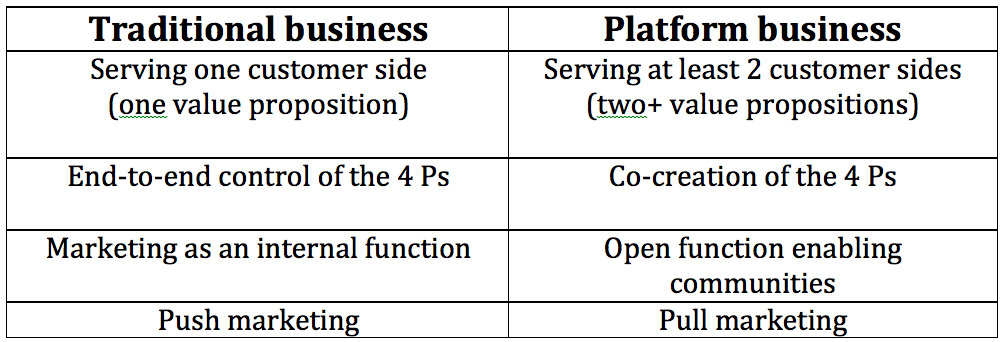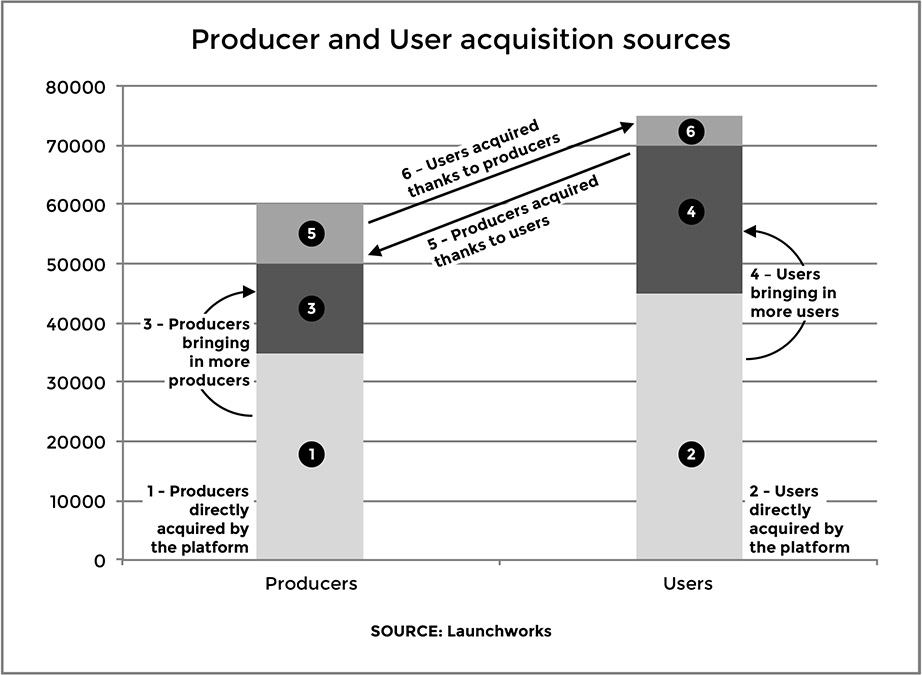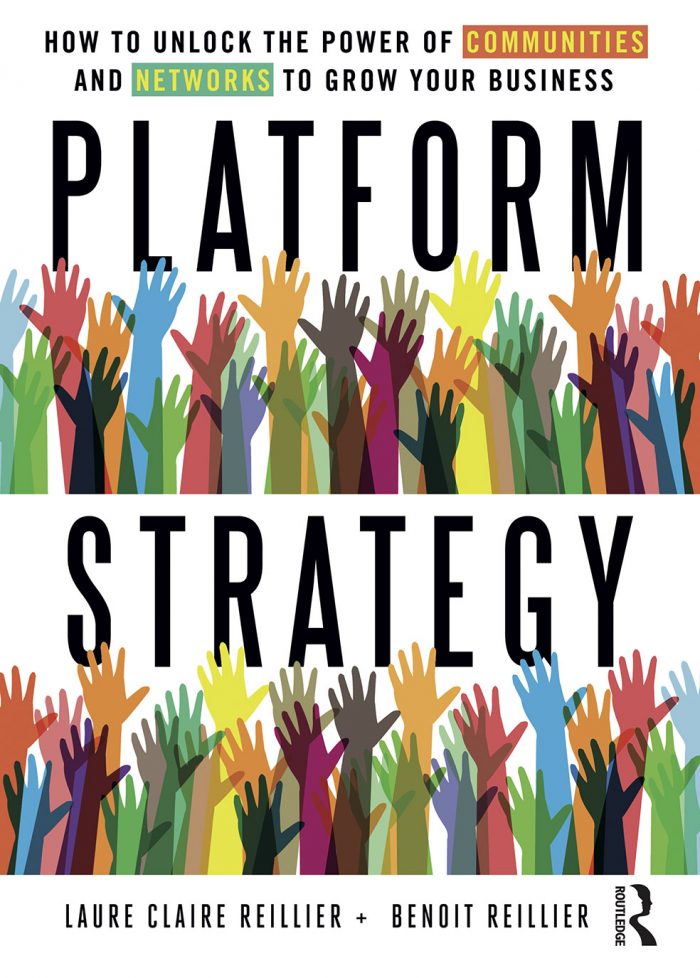It’s a new kind of business model which can scale rapidly (Airbnb, Uber) by harnessing network effects: platform marketing . . . here’s how it works:
The rise of platform businesses is on everyone’s lips. How did a young company like Airbnb manage to provide more rooms than the largest hotel groups in the world without owning a single hotel? And how did it manage to offer more than 4,000 rooms in Cuba while other hoteliers are still exploring market entry? And how did it manage to do this in a few years while it took literally a century for some competitors to establish themselves?
The answer is quite simple: platform businesses operate a different business model, which enables them to scale much more rapidly by creating network effects. While traditional businesses operate a linear process with complete control of the value chain end-to-end, platforms create value by attracting, matching and connecting diverse groups of customers to enable them to transact.
Platform marketing: platforms can be categorised into 4 groups:
- marketplaces (Airbnb, eBay)
- social platforms (LinkedIn, Facebook)
- payment platforms (Paypal, Visa)
- app stores and operating systems (Apple store, Windows)
Typically, platforms invite some customer groups, which we call producers, to co-create the value proposition of the platform. When guests use Airbnb, they experience a value proposition co-created with the host. When people use Uber, they also experience a service that is co-created by Uber and its drivers. Even when you use your Apple or Android smartphone, you really experience apps that are developed by third party developers. The final user experience is a function of the strength and quality of the platform ecosystem and its participants, rather than just the firm itself.
The platform business model redefines the marketing function. It’s now a more open function aimed at enabling and leveraging communities. While traditional firms used to push outbound messages to increase sales (push marketing), customers on both sides of the platform are enabled to participate in the creation and sharing of marketing messages (pull marketing).
The table below illustrates how the marketing function has been profoundly impacted by sharing economy and platform models.

The good news is that platforms can use their own marketing capabilities to market their services, but also can leverage marketing capabilities from users and producers themselves.
There are six main growth dynamics at play (source: T.Eisenmann, G. Parker and M. van Alstyne ‘Strategies for Two-Sided Markets’, HBR, October 2006), as shown on the graph below:

- Direct acquisition of new producers and new users by the platform (1 and 2). The platform markets directly and acquires producers and users, through organic (press, SEO, email, social media, direct mail, etc) and paid acquisition channels.
- Acquisition of new users through existing users (4). Product features such as viral invite loops are a great way to tap into existing users’ networks to acquire new users. For example, Snapchat and WhatsApp ask users to invite their friends by importing their contact books.
- Acquisition of new users through existing producers (6). The producers themselves market the benefits of joining and using the platform to their customers and people in their network. This can be through word of mouth, social media or platform tools aimed at helping producers advertise. Indiegogo, Kickstarter and other crowdfunding platforms have viral invite loops enabling project owners to invite people in their network to join in and fund their project. Eventbrite acquires new users by relying on event organisers to invite attendees to their events.
- Acquisition of new producers through existing users (5). This is the reverse, with users themselves inviting producers to join the platform, using similar channels and/or features. We mentioned Eventbrite’s viral loop of event organisers inviting attendees to their events. After attendees buy tickets, they discover that they can also use the platform to organise their own events.
- Acquisition of new producers through existing producers (3). In addition to very successful referral programmes on the guest side, Airbnb also has a referral program for its hosts. Existing hosts are asked to invite their friends to become part of the host community, in exchange for cash rewards.
Platform marketing: boosting early growth
This multi-source acquisition model benefits from viral loops and can help keep average acquisition costs low. Many platforms have managed to harness these various communities to boost their early growth.
For example, Instagram spent very little marketing in the first couple of years, relying instead on viral loops, brand ambassadors and great app store ratings, which all contributed to securing a top place in the app stores. Others like Etsy also used the same approach to keep their acquisition costs under control, thanks to strong viral effects, with the majority of gross market sales generated from organic marketing channels (i.e. from users and sellers themselves). More than 90% of Etsy’s site traffic come from direct, organic and email traffic sources, with less than 10% from paid traffic. The underlying strength of a large organic channel is also illustrated by Etsy’s repeat purchase rate – around 80% of purchases are from repeat customers.
Unlike traditional firms that need to market a product or service they fully control, platforms harness the power of communities to co-create value, and reach the all-important critical mass required for all participants to transact.
Platform marketing is now at the heart of many successful companies where traditional marketing recipes don’t apply any more.
Read also:
Actionable insights from data trends to inform your social marketing strategy
How data drives 5 key steps to maximising account-based growth









Leave your thoughts